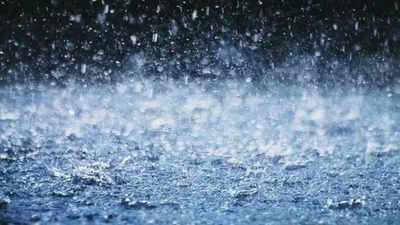- News
- Install advanced safety system, govt tells dam owners amid forecast of above normal rainfall
Install advanced safety system, govt tells dam owners amid forecast of above normal rainfall
The Centre has notified new regulations for dam safety, requiring owners of specified dams to install hydro-meteorological instrumentation networks. This is crucial as 'above normal' rainfall is expected, posing flood risks. The specified dams are listed in the National Register of Large Dams.

NEW DELHI: With the country expecting 'above normal' rainfall during the four-month (June-September) monsoon season, the Centre has notified new regulations asking every owner of the specified dams to install a well-designed hydro-meteorological instrumentation network for inflow forecasting and flood warning.
The move comes at a time when the forecast of 'above normal' rainfall indicates the possibility of a situation where filling up the dams to their full capacity may lead to flooding of low-lying areas in case of discharge of excess water for dam safety.The specified dams are those which fall under the National Register of Large Dams. There are 5,745 large dams in the country.
As per the register, there are 234 large dams in India, which are more than 100-year-old whose safety is a major concern when their catchment areas get fairly good rainfall during monsoon. Madhya Pradesh has the highest number (63) of more than 100-year-old dams followed by Maharashtra (44), Gujarat (30), Rajasthan (25) and Telangana (21).
Seeking to achieve the satisfactory level of dam safety assurance, the regulations notified by the National Dam Safety Authority on May 20, also asked every state dam safety organisation to keep "perpetual surveillance of all specified dams under their jurisdiction, to observe various anomalies including cracks in the body of the dam or abutment, unusual seepage, deflection in the dam body and any other problem related to dam or hydro-mechanical equipment" for the safety of the dams.
According to the notification, hydro-meteorological stations of specified dams will now have to constantly measure rainfall (precipitation), water level, discharge, temperature, humidity, evaporation, wind velocity and direction, and snowfall, if any, for monitoring the safety of dams.
The move comes at a time when the forecast of 'above normal' rainfall indicates the possibility of a situation where filling up the dams to their full capacity may lead to flooding of low-lying areas in case of discharge of excess water for dam safety.The specified dams are those which fall under the National Register of Large Dams. There are 5,745 large dams in the country.
As per the register, there are 234 large dams in India, which are more than 100-year-old whose safety is a major concern when their catchment areas get fairly good rainfall during monsoon. Madhya Pradesh has the highest number (63) of more than 100-year-old dams followed by Maharashtra (44), Gujarat (30), Rajasthan (25) and Telangana (21).
Seeking to achieve the satisfactory level of dam safety assurance, the regulations notified by the National Dam Safety Authority on May 20, also asked every state dam safety organisation to keep "perpetual surveillance of all specified dams under their jurisdiction, to observe various anomalies including cracks in the body of the dam or abutment, unusual seepage, deflection in the dam body and any other problem related to dam or hydro-mechanical equipment" for the safety of the dams.
Responsibility for safety of dams, including its operation and maintenance, rests primarily with dam owners which are mostly the state governments and central/state Public Sector Undertakings (PSUs). At present dam owners generally carry out the safety audit in terms of periodical pre-monsoon and post-monsoon inspection of their dams.
According to the notification, hydro-meteorological stations of specified dams will now have to constantly measure rainfall (precipitation), water level, discharge, temperature, humidity, evaporation, wind velocity and direction, and snowfall, if any, for monitoring the safety of dams.
End of Article
FOLLOW US ON SOCIAL MEDIA

